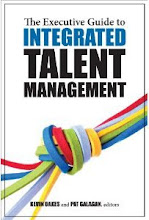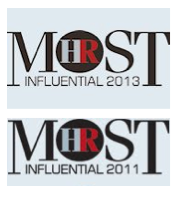 I’ve already posted on the drivers of change discussed in the CBI’s recent report, The Next 10 years. And here is my summary of the section on businesses’ responses. Hold onto your hats – it looks like it’s going to be a thrilling ride!
I’ve already posted on the drivers of change discussed in the CBI’s recent report, The Next 10 years. And here is my summary of the section on businesses’ responses. Hold onto your hats – it looks like it’s going to be a thrilling ride!
The business response
The changes I described in my last post are leading many businesses to reassess their purpose, structure and organisation, and what they need to do to ensure sustainable business success. For most, there will be a movement away from ‘business as usual’ towards a more flexible, collaborative and leaner model. This will include the following actions:
Bend 1. Building workforce skills
Businesses will have to build, retain and make the most of knowledge and experience in the workforce while finances for training are restricted, there are major changes in the make-up of the population available for work and individuals’ expectations of work continue to evolve.
Businesses will become much more proactive in their approach to talent management, placing greater focus on skill development. Many businesses will develop detailed skill roadmaps for their organisations.
However, businesses will also focus on enhancing business productivity and achieving a greater return on investment in training. More training will be delivered online, or through other virtual learning environments, and in-house, rather than being provided face to face and outside of the workplace.
Funding for ‘non-essential’ training and general career development training not directly aligned with corporate goals will be scaled down substantially or even stopped. (I think businesses will find doing this clashes with the changed workforce expectations that the report mentioned earlier on, and with increasing needs for smarter management in a more collaborative environment that is mentioned later. As the report notes, it will also provide a challenge in building management and leadership skills with longer timeframes for development.)
There will also be a trend to select and develop employees for a career within organisations rather than for a specific job, reflecting businesses’ preference for staff to be multi-skilled. (Not sure about this – it certainly goes against existing trends in organisations.)
Development will increasingly be provided through collaboration with schools, colleges, universities and other education and training institutions. To avoid organisational rationalisation closing down career paths, businesses will also collaborate with each other (particularly supply chain partners and customer organisations) to provide staff with secondments and other opportunities to gain skills and experience that cannot be found in one organisation. Employees will take a bit of the company ethos with them with each move, cementing relationships and building trust. (I have always thought this to be a good idea, and write about it in my HCM book.)
Bend 2. Developing a new employment model
New forms of partnership and collaboration, and new contractual relationships between employees and employers, are already emerging and will become more extensive.
Changes in employment legislation over the past decade have allowed many employees to ask for flexible working (eg to manage family, health or educational needs) and Generation Y employees have also sought greater flexibility to meet their own ambitions. But now employers will also increasingly ask for flexibility and will use this as a core part of their business model. For some sectors – eg in manufacturing – annualised hours contracts will become standard. In retail, zero-based hours (essentially call-up contracts with trusted individuals) will be used more extensively to manage peaks and troughs in workload. Payment in time – eg time off for sabbaticals or charity work – is likely to become the new bonus in place of money.
Businesses will continue to emphasise flexibility and a significant number will move to a new employment model where the core of permanent staff is smaller and a greater number of freelancers, consultants and temporary workers are used. The move to such a model accelerates an existing trend in the increase of freelancers. (Meaning that HR has to move its focus from just employees to everybody who provides the business with human capital.)
Bend 3. Rationalising the organisation
The recession has accelerated the need to address inefficiencies and non-core activities across the enterprise. It has also provided the stimulus for companies to re-think themselves and re-evaluate their future – allowing them to make organisational changes that will position them for the upturn and beyond, while building-in resilience and flexibility.
Businesses will continue to focus on reducing their costs, shifting the balance between fixed and variable costs to improve flexibility.
More significantly, businesses will seek to ‘simplify’ their operations in order to gain greater control of the complexities and interdependencies in their operations. This rationalisation will create new organisational structures built around a core of permanent employees and unique business propositions, with a much larger group of activities and people outsourced and offshored to and beyond the periphery of the organisation. (The report suggests this might include HR but I can’t see it – change of this magnitude will require HR to be right at the centre of organisations, managing it and then making it work.)
Bend 4. Moving to a more (externally) collaborative business model
The need to share risk, invest effectively in developing new innovations, and access finance and competencies will drive businesses to a more collaborative business model. The shift from transactional to collaborative relationships will bring about new alliances with a wide range of partners, including customers, universities, suppliers and, in some cases, competitors. Businesses will also work with the supply chain to improve supplier performance and efficiency (a clear opportunity for externally focused HR.)
The trends in the location of the supply chain for intangibles will also become more complex. Communications technology now allows the supply of knowledge based services to be based anywhere in the world and businesses will move more of their process-driven intangible supply chain abroad to take advantage of lower costs.
Collaboration is not without risk - establishing and maintaining trust will be critical. So businesses will invest in new management skills to deal with the risks and challenges accompanying collaborative working. (More great work for HR.)
Bend 5. Emphasising governance and sustainability
(This is the only one of my five areas that is clearly driven by the change drivers I reviewed in my last post, ie trust, social / demographic change and technology, rather than the recession and what is predicted will be a harder decade.
It is also the only section where I detect clear CBI spin. I’ve rewritten the next paragraph more extensively than other areas to bring it closer to the truth as I see it.)
Businesses are starting to recognise that demonstrating accountability will be part of the new ‘licence to operate’. Some businesses already invest significantly in governance and sustainability. This will become much more extensive and central to business with actions taken across all parts of the organisation and beyond.
There will be more investment in business continuity, risk analysis and mitigation, scenario planning etc and greater controls will need to be put in place. Monitoring by business of their internet – and in particular their on-line social network – presence will increase. (I agree with the need for scenario – for me this report outlines just one scenario – there will be others. I don’t agree quite so much with the need for more monitoring of social networks. I think the key here, again, is workforce skills, and trust.)
More senior management jobs will be dedicated to compliance, governance and risk management. But other managers and employees will need to support governance too.
The transition to more extensive governance will be difficult and the result will be less flexible, more rigid organisations at a time when businesses are trying to become more flexible. With these changes it will be difficult for companies to retain their agility and focus and there will be increased tension between delivering on governance and conducting core business. (I think the way to resolve this dilemma is through culture – meaning that less control is required.)
The implementation of a ‘no blame’ culture will be used by organisations to ensure mistakes are quickly uncovered and lessons can be learned. Leadership in businesses will be key to developing new cultures.
(HR doesn’t tend to get than involved in governance currently – with the part exception of the remuneration area. This report implies a much greater focus here.)
At the finish
It’s all highly interesting stuff. If you agree with the picture it describes, it provides some big, big challenges for the next 5 – 10 years. And if you don’t, do you have a different picture you can use? (Let me know if you want me to draw one for you.)
Photo credit: Andrew Waite
.





























I am going to predict many bigger small firms and many smaller big firms.
ReplyDeleteThe firms will tend to be owner managed with capital being less than 50%. The owners might be many of the employees.
The opportunities will be in the interstitials - not outsourcing firms of the past or brokers/rent seekers - but knowledge firms who are provide new opportunities for large networks of firms.
I might even bet on regulation declining but penalties increasing.
The content of business will be increasing at the high end of science, art and lifestyle and service companies will begin to feel competition in style from Asia.
Those are my guesses!